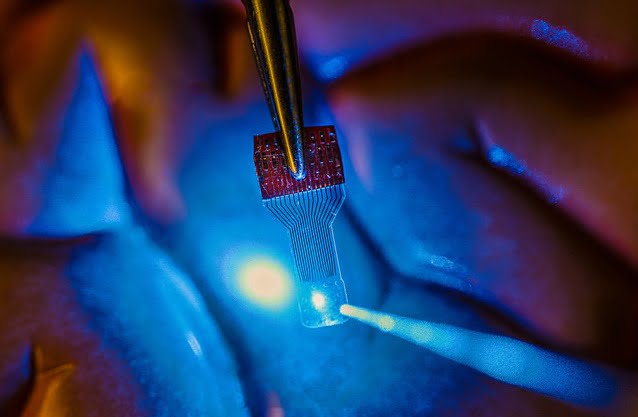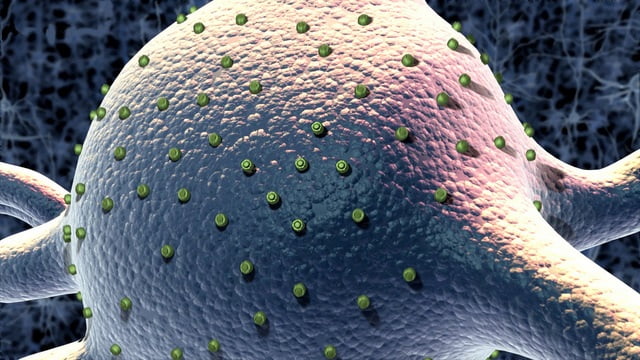Mending irregular heartbeats with light beams instead of pacemakers sound like science fiction? Think again because this is no longer a fictitious proposition.
Researchers at the Technion, Israel’s Institute of Technology, have developed a new approach for the treatment of abnormal heart rhythms by using a targeted, light-based therapy. The research found that by focusing a gene and light-based therapy called optogenetics on the hearts’ proteins, they could regulate the beating of the heart.
The finding could profoundly improve the treatment of heart conditions and make electronic pacemakers obsolete.
Pacemakers: an inefficient solution
Abnormalities in the function of the heart’s pacemaker cells can lead to an abnormally slow heart rate, or a decrease in the hearts’ pumping efficiency by delaying the transmission of electrical signals. In either case, the underlying electrical disability can result in serious consequences for patients, including weakness, dizziness, fainting, worsening heart failure symptoms and even death.
The conventional medical treatment used today relies on the implantation of an electronic pacemaker, which corrects the dysfunction of the natural pacemaker using electrodes inserted into various areas of the heart. Electronic pacemakers, however, have many limitations, including the risk of infection and the need for repeated invasive surgical procedures for implantation, manipulation, and battery replacements.
Additionally, clinicians are limited by the number and locations of the pacing wires used, and patients are at risk for a decline in heart function, since pacemakers cannot exactly re-create the normal electrical activation pattern of the heart. Perhaps most importantly, children who require pacemakers quickly outgrow their pacemaker wires and thus require repeated and invasive interventions over time.
SEE ALSO: Researcher Regenerate Heart Cells In What Could Be A Huge Breakthrough For Heart Disease Treatments
In light of these disadvantages, many researchers are working on developing biological alternatives to the electronic pacemaker. Technion researchers took on an optogenetic approach, a mixture between gene and light therapies, for the treatment of abnormal heart rhythms.
Sign up for our free weekly newsletter
SubscribeA new approach to a long-standing problem
The optogenetic technology allowed researchers to selectively activate light-sensitive proteins in an attempt to regulate the heart’s electrical activity. Optogenetics has become an important tool in brain research and the current study, recently published in ‘Nature Biotechnology’, is the first to translate this important innovation into a tool that can pace and resynchronize the heartbeat.
In the study, conducted in rats, the researchers first directed a beam of blue light towards an area in the heart where the light-sensitive genes were delivered. This resulted in the effective pacing of the heart according to the frequency of the blue light flashes applied. Subsequently, in a more advanced experiment, various locations in the rat hearts expressing light-sensitive proteins were activated by light, resulting in an improvement in the heart’s performance.
SEE ALSO: A Heart Of Gold: Researchers Use Gold Particles To Heal Heart Tissue
The study’s author, Prof. Lior Gepstein, stresses that this is a preliminary study, and that “in order to translate the aforementioned approach to the clinical arena, we must overcome some significant hurdles,” he said in a statement.
“We must improve the penetration of light through the tissues, ensure continuous expression of the protein in the heart for many years, and develop a unique pacing device that will provide the necessary illumination. But despite all of this, the results of the study demonstrate the unique potential of optogenetics for both cardiac pacing (as an alternative to electronic pacemakers) and resynchronization (for the treatment of heart failure with ventricular dys-synchrony) therapies.”
Photos: The Why Files/ Kyle Van De Graaff/ Julie Pryor
Related posts

Israeli Medical Technologies That Could Change The World

Harnessing Our Own Bodies For Side Effect-Free Weight Loss

Missing Protein Could Unlock Treatment For Aggressive Lung Cancer






Facebook comments